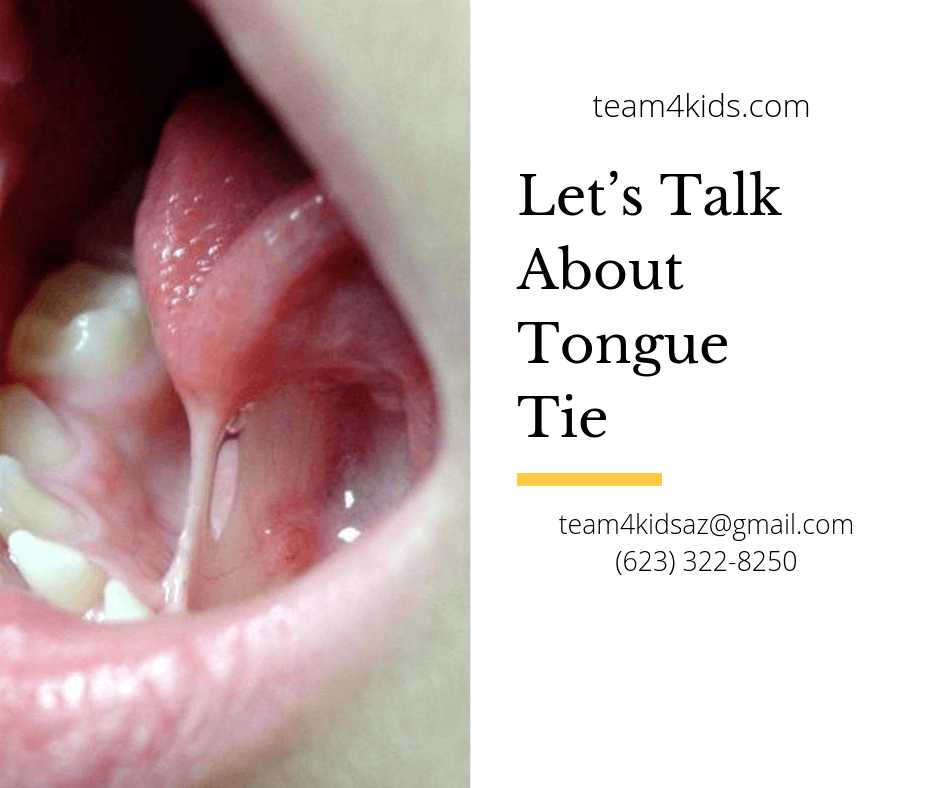Ankyloglossia, frequently referred to as a tongue-tie, is a common congenital irregularity in which the tongue is tethered to the floor of the mouth. The degree of severity of the tongue-tie differs between individuals as well as the impact that it may have on feeding and speech.
During a feeding or speech evaluation at TEAM 4 Kids, you may have observed the speech-language pathologist asking your child to “make some funny faces” with her. By doing this, the SLP is able to assess the appearance and function of your child’s oral structures including his or her tongue movements. Typically, the SLP is looking to make sure your child can protrude the tongue out of the lips, elevate the tongue to the nose without using the jaw to aid, and lateralize the tongue side to side as well as the appearance of the tongue while completing these tasks. These movements are necessary for feeding therapy because they allow the child to move the food to both sides of the oral cavity as well as produce a typical swallow and clear food residue from teeth. The movements are also important for speech production because they allow us to produce sounds with our tongue tip up such as /s/, /z/, /t/, /d/, /n/, and /l/.
So, what is the SLP looking for while assessing the tongue to determine if a referral for an ENT (Ear, Nose, and Throat doctor) or a dentist is recommended? We first look at the movement of the tongue to determine if it is functional for feeding and speech production. When the tongue is protruded, the SLP will observe the appearance of your child’s tongue. Tongue-ties may cause the tongue to have an indent on the tip of the tongue when protruded which looks like the top of the heart or the tongue could be square an unable to make a point. If your child will allow the SLP, she will also look at your child’s lingual frenulum (the thin tissue under the tongue that connects the tongue to the floor of the oral cavity). Typically, a lingual frenulum connects the middle part of the tongue to the floor of the mouth; however, a tongue-tie may be suspected if the lingual frenulum connects the anterior portion of the tongue to the floor of the mouth.
If a tongue-tie is suspected, a referral to your child’s ENT or dentist may be recommended by the SLP. At the appointment, it is important to inform the provider that you would like your child’s oral structures to be evaluated, including the tongue to rule out a tongue-tie. An SLP is unable to diagnose or treat a tongue tie; however, she is able to make a recommendation for a referral if a tongue-tie is suspected due to restricted tongue movements. Your child’s ENT or dentist will be able to diagnose or rule out a tongue-tie; however, it should be noted that ENTs and dentists have varying beliefs about the effects of tongue-tie on feeding and speech production.
If you have concerns regarding your child’s speech or language skills, please do not hesitate to reach out to T.E.A.M 4 Kids for a free screening or evaluation with one of our wonderful speech-language pathologists in Surprise, Arizona or at our now open Peoria, Arizona clinic!


